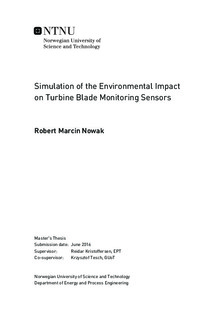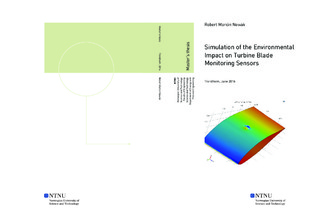| dc.description.abstract | Kongsberg Maritime AS is a company mostly involved in selling automation and
equipment to ships and oil rigs. They are considered with wind power as well and started program "WiVind" which main goal is to develop a surface mounted sensor on a Wind turbine to help with damage detection. The sensor will be affected by wind which will produce aerodynamic forces and change the flow over a blade of the wind turbine.
The main goal of this master thesis is to investigate the forces acting on the sensor
body and check how the flow will be changed by this obstacle. Simulations and calculations will be done by using CFD software COMSOL Multiphysics 5.2.
A literature study was carried out to understand aerodynamics in external flows
around blunt bodies and how models should be implemented in CFD software. Initial 2D
simulations were performed in order to choose turbulence model and find the most optimalcross-section of the sensor. This study showed that the best senor had a smooth surfacewithout any sharp edges and the k omega SST turbulence model gave the best results.
Next the 3D simulations of the sensor model mounted on an actual wind turbine
blade were carried out. A few approximations were made in order to reduce computationaltime. With these approximations it was possible to simulate flow only over a part of the wind turbine blade with the sensor mounted on it. Results showed that, for the proposed sensor shapes, force coefficients were very similar which means the total force was only affected by the total area of the sensor, not its shape. The placement of the sensor can affect the flow. Sensor mounted close to the place where the thickness of the blade is highest could drastically influence the flow by creating a large separation area which could reduce the efficiency of the wind turbine.
The NAFNoise noise prediction code, made by NREL institute, was used to predict
the Aeroacoustics of the wind turbine blade. This code could only be used for part of the wind turbine but it should not affect the results too much. Calculations were performed for different freestream wind velocities.
Icing problem was checked by using the icing maps made by the Kjeller Vindteknikk company which used WRF model to estimate ice risk in a given area. In the
Hundhammerfjellet Wind Farm based on these maps icing problem should occur 200 hours
per year. | |

